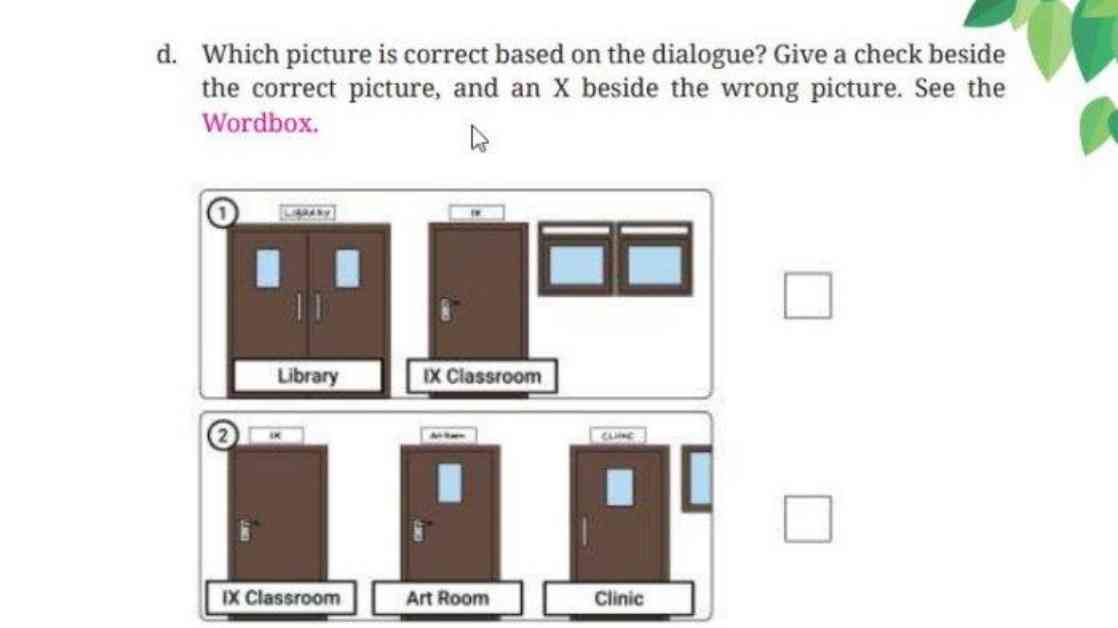In the hustle and bustle of daily life, finding the time to assist our children with their studies can often prove challenging. The task of guiding our young learners through their coursework, especially in a subject like English, can sometimes feel like a daunting feat. However, fear not, for within the pages of the “English For Nusantara” textbook lies a valuable resource for parents and guardians of seventh-grade students. Nestled on page 209 of the curriculum’s second semester, Chapter 5: This is My School, Section 2 – Listening, awaits Worksheet 5.3—a key to unlocking the mysteries of English comprehension.
Unraveling the Key
Contained within the confines of Worksheet 5.3 is a series of questions designed to test students’ listening skills. One particular query asks students to identify the correct picture based on a brief dialogue between characters Galang, Monita, and Pipit. With the accompanying Wordbox providing visual aids, students are prompted to place a check mark beside the correct image and an ‘X’ beside the incorrect one. This exercise not only challenges students to listen attentively but also sharpens their ability to infer meaning from context—a crucial aspect of language proficiency.
As parents or guardians, the responsibility falls upon us to ensure that our children are grasping the material presented in their coursework. By engaging with the answer key on page 209 of the seventh-grade English curriculum, we can actively participate in our children’s learning journey. With a keen eye and a listening ear, we can help guide our young scholars towards a deeper understanding of the English language.
Behind the Scenes
In the accompanying audio script, we are transported into a typical school setting, where characters Galang, Monita, and Pipit engage in a casual conversation. The dialogue unfolds with Galang expressing his enthusiasm for science—a sentiment that resonates with many young learners who find joy in exploring the wonders of the natural world. Monita echoes this sentiment, declaring her love for science and highlighting the universal appeal of this subject among students.
As the conversation progresses, Pipit poses a question to Galang regarding a specific room within the school. Through this interaction, students are encouraged to pay close attention to the details of the conversation, honing their listening skills in the process. Galang’s response, identifying the room as the clinic located between the principal’s office and the ninth graders’ classroom, offers a glimpse into the school’s layout and fosters a sense of familiarity with the setting—a valuable exercise in contextual comprehension.
In conclusion, the answer key on page 209 of the seventh-grade English curriculum serves as a bridge between students, parents, and educators, fostering a collaborative approach to learning. By delving into the nuances of the dialogue and accompanying questions, students can enhance their listening skills while parents and guardians actively participate in their children’s academic development. Together, we can embark on a journey of discovery and growth, one worksheet at a time.
As we navigate the intricacies of education, let us remember that the pursuit of knowledge is a collective endeavor—one that requires patience, empathy, and a shared commitment to learning. By unlocking the mysteries of Worksheet 5.3, we open the door to a world of linguistic exploration and academic enrichment. So, grab your pencils, sharpen your listening skills, and embark on this educational adventure with your young scholar. The key to success lies within your grasp—page 209 awaits, ready to guide you on this rewarding journey of discovery and learning.














